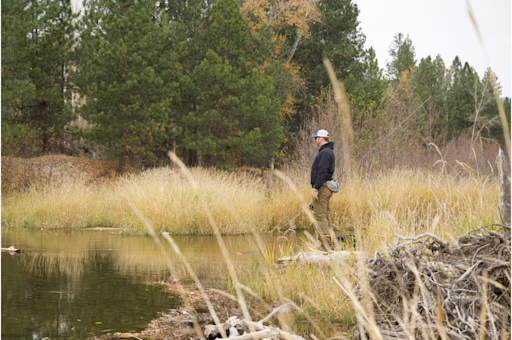Fishbrain's guide to sunfish
Our fisheries biologist, Ryan Hearn, goes through how to use key characteristics to properly ID different species of sunfish.
Share this article

Sunfish are some of the most colorful and eye-catching fish in our freshwater systems. They're a big draw for anyone who wants some action on the rod and a great intro fish to kids and new adult anglers.
Identifying sunfishes can be tricky, given their species diversity, especially with hybrids in the mix. Sunfish species commonly hybridize with each other, making it a bit of a challenge to nail down the exact species, especially within the Lepomis genus. This guide will give you a thorough introduction to identifying common pure-bred sunfishes. Being an introductory guide, this will not explore identifying subspecies, hybrids, most of the micro-sunfishes or species complexes.
Everyone from new anglers to seasoned fish identification to seasoned experts can learn something from this new ID guide. Hopefully, this guide not only helps you identify these fascinating fish but also fosters a deeper appreciation for them and supports efforts to protect their habitats and our freshwater ecosystems.
At the bottom there is a downloadable PDF with all the ID guides for easy access.

The most common of all sunfish is the bluegill, occurring in the entire continental United States. You can pretty much find them anywhere where there’s weeds or structure. The bluegill is most easily identified by its operculum (or ear flap), which has no additional coloring on the edge of the flap. Bluegill have a very round shape compared to some other sunfish and, besides some possible dark pigmentation, they have no colors or patterns on their fins. Bluegill are most commonly misidentified with the pumpkinseed. Both can have vertical barring and a yellow belly, but the pumpkinseed has a distinct red spot on its operculum (ear flap) and wavy blue lines on the gill plate.
The way I like to remember how to identify bluegill is by thinking of it as the most basic of the sunfishes, no edging on operculum, no color on fins, and no crazy patterning.

The second most common sunfish is the green sunfish. Green sunfish also occur in the entire continental United States. Greens are often known as the most aggressive, annoying, chihuahua-esque of all sunfishes. They attack crankbaits and wacky worms bigger than them, constantly stealing bait, pulling off soft plastics.
The green sunfish is most easily identified by several key features. Blue streaks on the gill plate, the red/orange edging on fins, red/orange edging on the operculum and its easily recognizable patterning, stripes of blue dots are all defining markings.
Greens are most commonly misidentified with the warmouth given they have similar body shape and mouth size. Warmouth can also have blue bars on their gill plate - although thick and radiating rather than small streaks like the green sunfish.
Most easily identifiable by their patterning, green sunfish have the stripes of blue dots, and sometimes black vertical bars, running lengthwise on their body, while warmouth have either sparse black and blue dots or a mottled bar pattern.

The warmouth is native to the swamps and creeks of the Mississippi river basin and the South. The species is closely related to the green sunfish and behaves similarly, acting as an ambush predator under ledges, weeds, and any crevice it can fit in.
This species can be tricky to identify given its varied patterns. I recommend narrowing it down based on its large mouth size and elongated body and then looking for key characteristics in the other species, like horizontal blue lines found in green sunfish. Warmouth are most commonly misidentified with green sunfish or rock bass.
The main feature to look for here is the consistent black dots on the rock bass that form horizontal stripes. While warmouth have black dots, they are very sparse and usually followed with blue dots. If there's any blue dots or blue radiating bars from the gill plate, it is not a rock bass.

Next up, the pumpkinseed, which are native to the upper Midwest and the Northeast. One of the more colorful and pretty sunfish in my opinion. It is easily recognizable by its vertical orange/brown spots all over its body. In juveniles and some females the spots can be fairly faint. In those cases look for the red blotch on the operculum with the combination of wavy blue lines on the gill plate.
Pumpkinseed are most commonly misidentified as redear sunfish or bluegill. The best way to determine if it’s a pumpkinseed or a redear is to look at the gill plate. Pumpkinseeds have the aforementioned blue wavy lines and redear have bronze spots.

The redear sunfish, also known as the shellcracker for their ability to crack snail shells (and other types of shells) to feed. The key characteristics here are the faint bar pattern made up of bronze spots, their red blotch on the operculum, and the gold spots on their gill plate. Commonly misidentified with other “red-eared” sunfish, especially the pumpkinseed, look for blue wavy lines (pumpkinseed) or gold spots (redear).

The longear sunfish is, in my opinion, the most beautiful of all sunfish. The iridescent blue mirage on the sea of orange and red is exceptional, although I do have a qualm with its common name. While it does have a long ear (flap), the redbreast sunfish has an even longer ear (flap).
The redbreast is probably its most commonly misidentified species outside of the longear species complex (northern sunfish, dollar sunfish, Rio Grande longear, plains longear, etc). Both have long operculums, red and blue coloring and red fins. The main characteristic I look at is the operculum.
Redbreasts have very narrow operculum and no colored edging, whereas longears have “normal” thick operculum with white or orange edging. Redbreasts are also more elongated and have orange spots on blue background whereas longear have blue spots on orange background.

Native to just the Eastern United States and the newest to my life-list is the redbreast sunfish. Well adapted to creek life, their main identifiable features are the long narrow operculum, wavy blue lines on gill plate, and their distinct patterning. Most often misidentified with longears, look at the operculum thickness in conjunction with the edging and the patterning.

The most endemic (limited to the smallest area) of the sunfishes in this article is the spotted sunfish, native just to the southeast United States. Despite the spotted sunfish not being as colorful as others, I really enjoy its spotted patterning. These are most commonly misidentified with the bluegill and redspotted sunfish (which I’ll go over in the next paragraph). Both the bluegill and spotted sunfish have a colorless edging operculum, round body and fairly plain patterning. Bluegill often have spotted patterning, usually only occurring in the upper body, thicker, and not at the base of every scale. The best way to tell the difference is spotted sunfish have black spots on the gill plate and no blue coloring on the bottom of the gill plate. Spotted sunfish also have spots on the base of most scales without a barred pattern.

The redspotted sunfish was once considered the same species as the spotted sunfish. Redspotted sunfish are found in the south, but more westward of the spotted sunfish’s range and surprisingly as far north as the Illinois river basin.
Similar to spotted sunfish, the redspotted sunfish has spots at the base of almost every scale, although as name implies, the spots are red (or orange). The main way to tell the difference between the two species is by analyzing the pattern, or by looking at their species range.
Redspotted sunfish have much thicker spots too, compared to small black dots. Sometimes spotted sunfish have some red or orange in the patterning, but another indication could be any red or orange around the operculum hinting at being a redspotted sunfish.

Orangespotted sunfish are the only “micro-sunfish” covered in this article, but they are very common, ranging through most of the Midwest and the South. Despite only growing to roughly six inches, they are a fairly frequent bycatch while panfishing. Named for its distinct orange spots, they are unsurprisingly misidentified for pumpkinseeds, which also contain orange spotting. The main difference between the two is that orangespotted have white/pink and sometimes even red edging all the way around the operculum rather than a red blotch at the end of the operculum. The patterning is tell-tale, orangespotted have sparse, “random” orange spotting whereas pumpkinseeds have plentiful orange/brown spots in vertical columns.

The first, of two, species this article covers that does not belong to the Lepomis genus. This species mostly occurs throughout the Great Plains and eastward. Rock bass have a distinct bronze color and red eyes, often mistaken for smallmouth bass and warmouth (as mentioned previously).
For clarity this is also part of a species complex that we will not go over, including the Ozark bass, shadow bass, and Roanoke bass. To identify it from a smallmouth, it is easiest to look at the pattern. Rock bass have horizontal stripes made up of small black dots, and while smallmouth patterning can vary, they will not have spotting, rather vertical stripes. Smallmouth are also more elongated, get much bigger (if it’s bigger than twelve inches, it’s probably a smallmouth), have distinct bars from their eyes and don’t have barred/spotted patterning in their fins.

Last, but not least, the flier. Native to the swamps and pine barrens of the lower Midwest and the South. Commonly mistaken for a crappie, or a weird hybrid of sorts, this is its own species and has its own genus.
To identify it from a crappie, I find it easiest to look at the patterning. Fliers have horizontal stripes made up of small black dots whereas crappie have scattered black blotches, (black crappie) or horizontal stripes made up of black blotches (white crappie).
Fliers have small “sunfish-like” mouths, while crappie have much larger “paper-like” mouths. You can also count the dorsal spines for a definitive identification. Dorsal spines are the hard spines on top of the body before the soft-rays. Black crappie have 7 or 8 dorsal spines and white crappie have 5 or 6 dorsal spines, and conversely fliers have 11-13 dorsal spines.
Sunfishes are truly some of the most vibrant and interesting species in our freshwater ecosystems, and getting to know them better is just the start of appreciating the beauty and complexity of our natural world.
Downloadable guide
Special shout-out to Fishbrain users William Andrew Phillips and "Brim_Chaser" for letting us use their awesome images.
If you haven't experienced the #1 fishing app worldwide, make sure and check out Fishbrain to see all the fish data, fishing spots, weather conditions you've been missing out on plus much more.

Download the Fishbrain app and access the best fishing spots in your area
Related blog posts
Master the hardwater season with advanced ice fishing tips . Learn how to find fish faster, refine your search and adjust presentations to catch more fish all winter long.

Your guide to Victoria’s best fish to catch in rivers, lakes, and coastal waters. Learn prime species, fishing tips, and key regulations

Learn how fish adapt as water temperatures cool from autumn to winter, including changes in behavior, metabolism, and habitat that help them survive.



